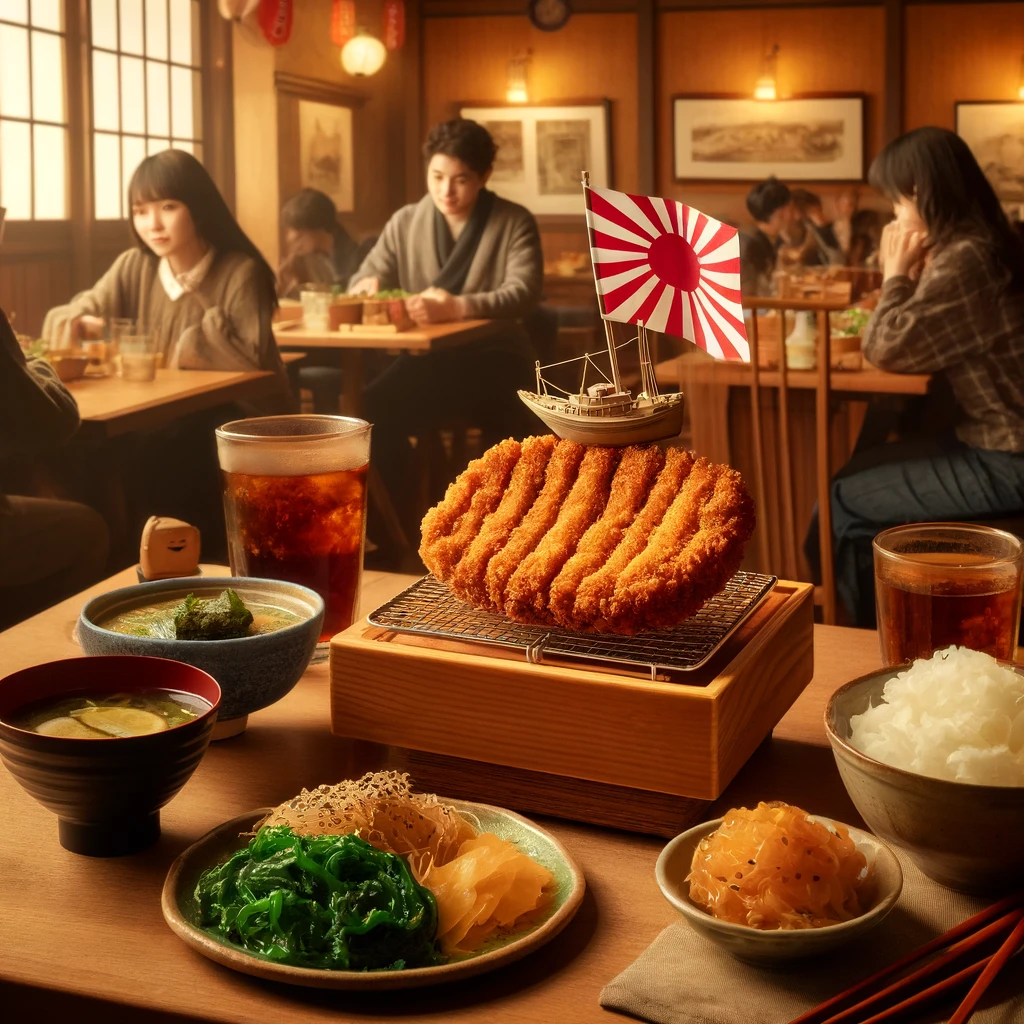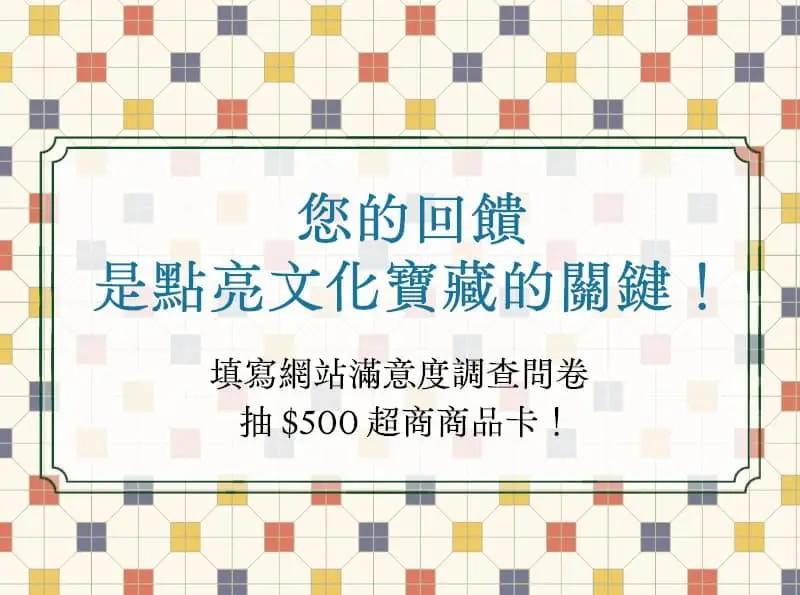My parents run a Japanese restaurant, so I spent much of my childhood in the kitchen. In a literal sense, I was raised on Japanese cuisine. One dish that comes to mind is the "tonkatsu set meal" (fried pork cutlet set meal). My dad told me that in Japanese culture, tonkatsu symbolizes victory because the word for fried pork cutlet (katsu) sounds like the word for victory (katsu), giving it a sense of assurance and calm for an anxious heart.
Japanese tonkatsu sauce is sweeter compared to Taiwanese soy paste, which might be why I prefer sweeter foods, influenced by my family background. To maintain the crispiness of the tonkatsu, it's usually placed on a metal rack to prevent steam from softening the breaded coating. The set also includes shredded cabbage, sesame-sprinkled burdock root, pickled seaweed, and a bowl of miso soup. Tonkatsu can be made from either loin or tenderloin; I usually prefer tenderloin because it's more fatty, making it tender and flavorful.
Due to my parents' busy work schedules, dining at their restaurant always felt comforting, even if the meal wasn't prepared by them. It had a sense of "home." The moisture content of the Koshihikari rice must be just right—not too wet, not too dry. Eating tonkatsu gives me both physical and psychological satisfaction.
After entering the workforce and moving to another city, I still make it a point to visit the restaurant for a meal whenever I return home. It offers a sense of reassurance, knowing that the tonkatsu still tastes as it did in my memory, acting as an emotional anchor.
-
《島嶼未來料理教室》Future Formosa Culinary Lab Profile Nr.031
22-30歲的臺北市嗜甜食者,平均花費250元在餐費上。因為吃貨の夥伴而對飲食記憶留下深刻印象。如果世界末日終將來到,會選擇與家人(父母、妹妹)共享這一餐。關於家庭的一道料理,他提到炸豬排飯。
"Sweet Tooth"
Male(22-30 yrs)/ Kaohsiung City / 250 NTD per meal
Profound dining impressions were shaped by foodie companions.
If the end of the world were to come, he would choose to share the meal with his family (parents and sister).
As for a family dish, he mentioned fried pork chop rice.
-
國立臺灣歷史博物館的第 1 個「公共飲食記憶 NFT 化」實驗計畫《超時空島嶼餐桌》
National Museum of Taiwan History's First NFT Experimental Project on Public Dining Memories《Time-Space Dining Tables》
「國立臺灣歷史博物館」為推動國家文化記憶庫之永續發展,融入當代議題、常民生活及在地關懷,連結博物館專業、數位創新思維與多元社群行動,以促進臺灣原生文化之活化運用,鼓勵全民共同開展記憶庫多元主題與主題素材近用。
本計畫案於112年推出《島嶼庫客 Islands Cooker》飲食記憶系列7支影片,探究臺灣飲食的歷史成因,113年延續「餐桌」的概念,加入「未來」元素,委由畸零地創造股份有限公司辦理《島嶼未來料理教室——NFT設計工作坊》,以記憶庫長期深耕之飲食記憶主題,透過非同質化代幣(Non-Fungible Token,以下簡稱 NFT)設計工作坊,增進記憶庫之內容與應用,落實臺灣原生文化之推廣。
《島嶼未來料理教室——NFT設計工作坊》以「推測設計」為核心,反思記憶料理的獨特性,其之於 NFT的當代意義及其飲食文化價值,並將工作坊延伸設計為「發掘身體飲食記憶,運用想像和推測來創造未來島嶼飲食文化」的參與式體驗活動。工作坊由編舞家與引導師,透過一連串的帶領、想像和對話,挖掘及連結蘊藏身體感知中的飲食記憶,並讓參與者書寫飲食記憶;接著由畸零地工作室與生成式AI 「ChatGPT 4o」協作製作出 「記憶食譜 NFT」及文字翻譯;最後線上場以「圍爐」的概念,讓參與者在雲端上互相分享與交流。
這些飲食記憶透過NFT不可替代、數位交換的特性,被永久保存並流傳,期望每個人都能回首屬於自己的飲食記憶和歷史,經由公共化的途徑與媒介,成為社會記憶的一部份,構築社群認同的可能。
To promote the sustainable development of the Taiwan Cultural Memory Bank, the National Museum of Taiwan History integrates contemporary issues, ordinary life, and local concerns. By combining museum expertise, digital innovation, and diverse community actions, it aims to revitalize and utilize Taiwan's indigenous culture. The museum encourages the public to collaboratively develop and access various themes and materials within the memory bank.
This project launched the "Islands Cooker" series of seven videos on culinary memories in 2023, exploring the historical origins of Taiwanese cuisine. Continuing with the concept of the "dining table" and incorporating "future" elements in 2024, the project entrusted Ground Zero Co., Ltd. to handle the "Islands Future Cuisine Classroom—NFT Design Workshop." By delving into the long-term themes of culinary memories from the Taiwan Cultural Memory Bank and utilizing the Non-Fungible Token (NFT) design workshop, the project aims to enhance the content and application of the memory bank, promoting the dissemination of Taiwan's indigenous culture.
The "Islands Future Cuisine Classroom—NFT Design Workshop" centers on "speculative design," reflecting on the uniqueness of memory cuisine and its contemporary significance and culinary cultural value in relation to NFTs. The workshop is extended into a participatory experiential activity, designed as "discovering culinary memories in body and using imagination and speculation to create future island culinary culture." The workshop, led by choreographers and facilitators, guides participants through a series of activities, including imagination and dialogue, to uncover and connect with culinary memories embedded in their bodily perceptions. Participants then write down their culinary memories. Next, Ground Zero Co., Ltd. collaborates with the generative AI "ChatGPT 4o" to create "Memory Recipe NFTs" and translate the texts. Finally, the online session, based on the concept of "reunion dinner," allows participants to share and exchange their experiences and creations in the cloud.
These culinary memories, preserved and circulated through the non-fungible and digital exchange characteristics of NFTs, are expected to be permanently stored and shared. The goal is for everyone to reflect on their own culinary memories and histories, making them part of societal memory through public pathways and media, thereby fostering a sense of community identity.
※本圖像為AI生成內容
※This image is AI-generated content.












